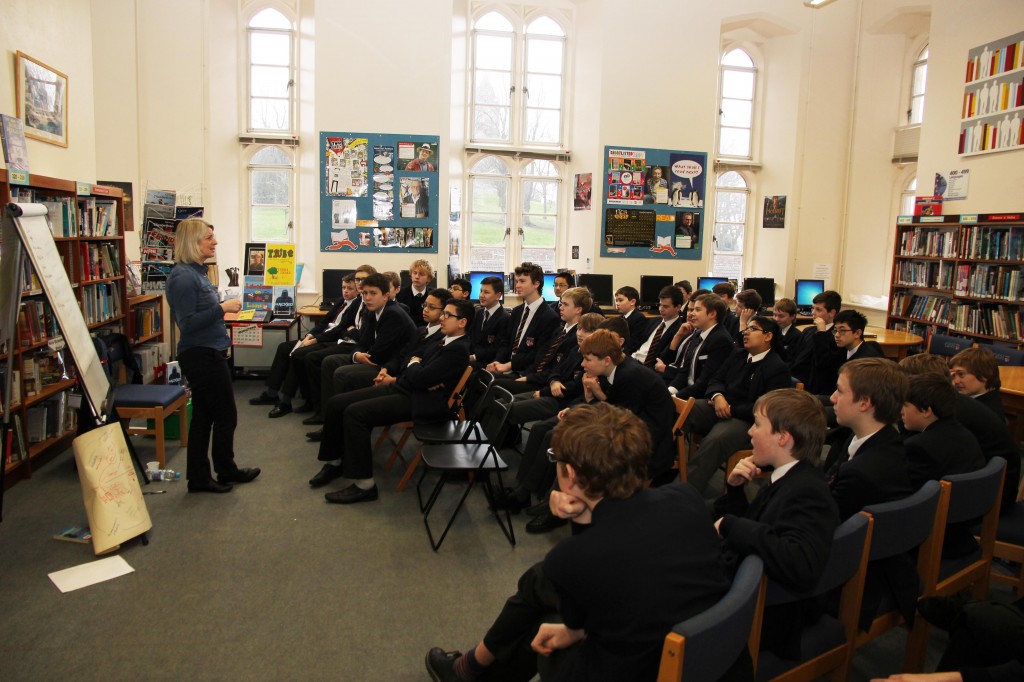The second half of the HACKED tour of Bristol was more fun than the first, because it took a while for me to get into the groove. Having spent five years as an author of books for 8-12 year olds I’ve had to up my game in the face of hundreds of teenagers. Reminding myself that they’re not expecting Michael McIntyre is useful – even if they are. My other trick is to be measured in my expectation. With junior school children I would often end up with a child hanging on to my leg – clearly not an aspiration for a taller audience. The goal now is to keep their attention most of the time, get a reasonable number of kids contributing useful stuff and be more entertaining than the lesson they would have been in. So far so good.
Highlights of the first five school visits in 2015 were: the QEH boys who knew everything and more about DDoSs, Lizard Squad and botnets, including the one who had actually built his own drone and the scary moment where I had to debate the difference between cyber-crime and hacking; the terribly nice English teacher at Clifton High who suggested I carry on all afternoon as it was so interesting; the great discussion we had at Clifton College about character development, and the bit about how you make a first-person narrator die; Hassan and Brittany doing a brilliant job collecting all the suggestions on the flipchart at Bristol Brunel; and the after-school writing club at Cathedral where we shared writing tips.
of the first five school visits in 2015 were: the QEH boys who knew everything and more about DDoSs, Lizard Squad and botnets, including the one who had actually built his own drone and the scary moment where I had to debate the difference between cyber-crime and hacking; the terribly nice English teacher at Clifton High who suggested I carry on all afternoon as it was so interesting; the great discussion we had at Clifton College about character development, and the bit about how you make a first-person narrator die; Hassan and Brittany doing a brilliant job collecting all the suggestions on the flipchart at Bristol Brunel; and the after-school writing club at Cathedral where we shared writing tips.
The best thing about wandering into schools to run an interactive session is that it’s different every time. Next up – Hans Price Academy . . .
